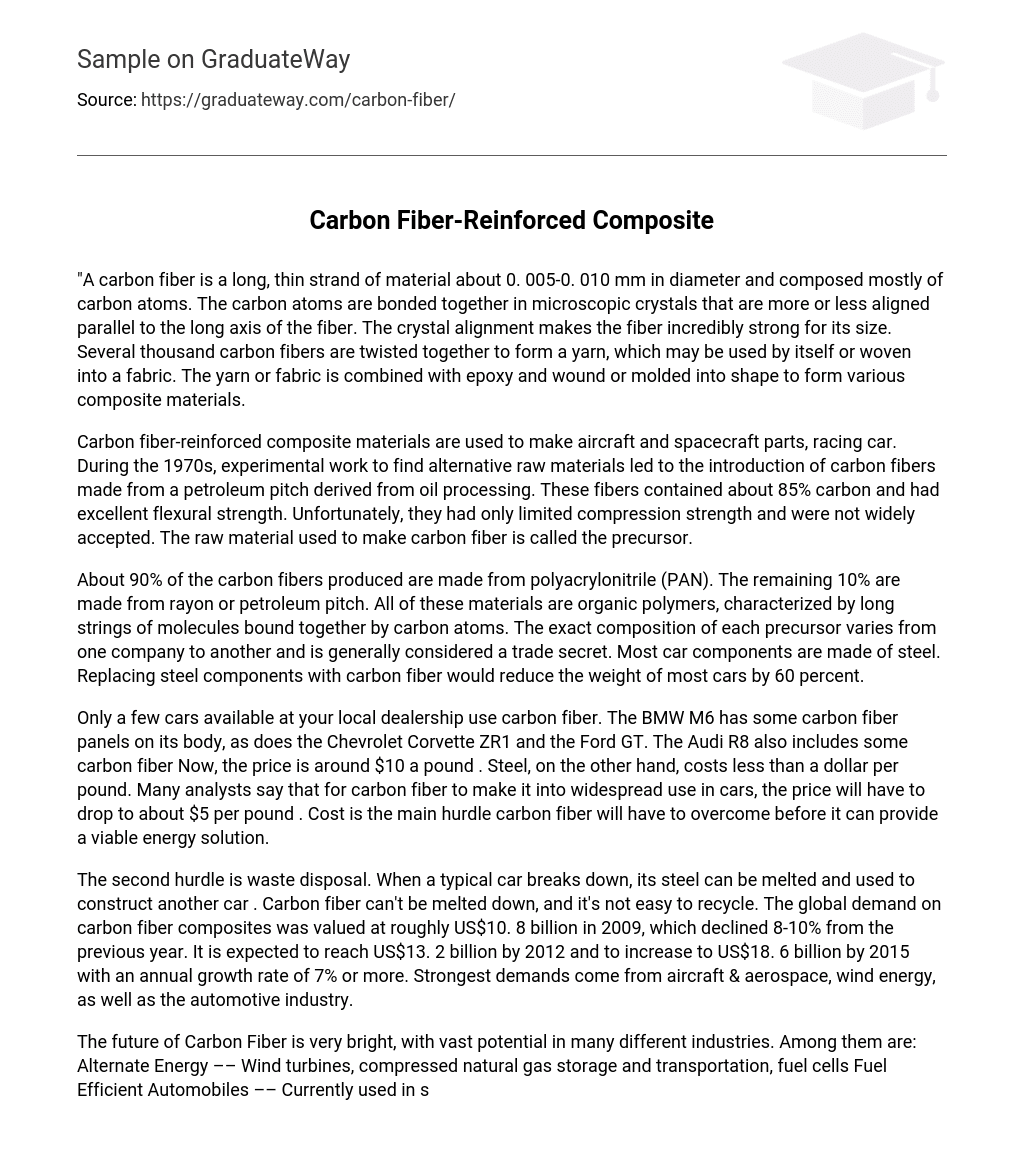“A carbon fiber is a long, thin strand of material about 0. 005-0. 010 mm in diameter and composed mostly of carbon atoms. The carbon atoms are bonded together in microscopic crystals that are more or less aligned parallel to the long axis of the fiber. The crystal alignment makes the fiber incredibly strong for its size. Several thousand carbon fibers are twisted together to form a yarn, which may be used by itself or woven into a fabric. The yarn or fabric is combined with epoxy and wound or molded into shape to form various composite materials.
Carbon fiber-reinforced composite materials are used to make aircraft and spacecraft parts, racing car. During the 1970s, experimental work to find alternative raw materials led to the introduction of carbon fibers made from a petroleum pitch derived from oil processing. These fibers contained about 85% carbon and had excellent flexural strength. Unfortunately, they had only limited compression strength and were not widely accepted. The raw material used to make carbon fiber is called the precursor.
About 90% of the carbon fibers produced are made from polyacrylonitrile (PAN). The remaining 10% are made from rayon or petroleum pitch. All of these materials are organic polymers, characterized by long strings of molecules bound together by carbon atoms. The exact composition of each precursor varies from one company to another and is generally considered a trade secret. Most car components are made of steel. Replacing steel components with carbon fiber would reduce the weight of most cars by 60 percent.
Only a few cars available at your local dealership use carbon fiber. The BMW M6 has some carbon fiber panels on its body, as does the Chevrolet Corvette ZR1 and the Ford GT. The Audi R8 also includes some carbon fiber Now, the price is around $10 a pound . Steel, on the other hand, costs less than a dollar per pound. Many analysts say that for carbon fiber to make it into widespread use in cars, the price will have to drop to about $5 per pound . Cost is the main hurdle carbon fiber will have to overcome before it can provide a viable energy solution.
The second hurdle is waste disposal. When a typical car breaks down, its steel can be melted and used to construct another car . Carbon fiber can’t be melted down, and it’s not easy to recycle. The global demand on carbon fiber composites was valued at roughly US$10. 8 billion in 2009, which declined 8-10% from the previous year. It is expected to reach US$13. 2 billion by 2012 and to increase to US$18. 6 billion by 2015 with an annual growth rate of 7% or more. Strongest demands come from aircraft & aerospace, wind energy, as well as the automotive industry.
The future of Carbon Fiber is very bright, with vast potential in many different industries. Among them are: Alternate Energy –– Wind turbines, compressed natural gas storage and transportation, fuel cells Fuel Efficient Automobiles –– Currently used in small production, high performance automobiles, but moving toward large production series cars Construction and Infrastructure –– Light weight pre-cast concrete, earth quake protection Oil Exploration –– Deep Sea drilling platforms, buoyancy, umbilical, choke, and kill lines, drill pipes”





